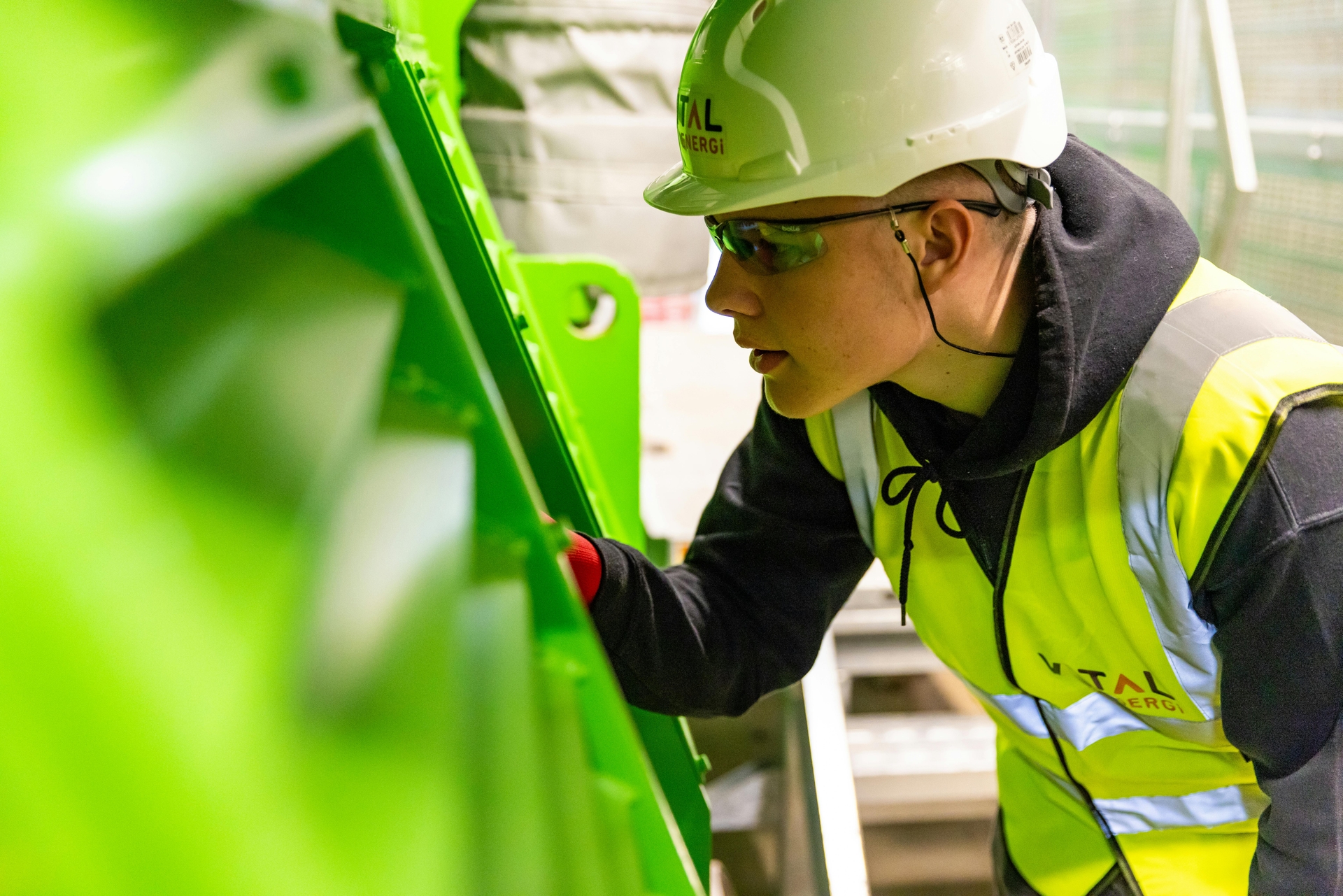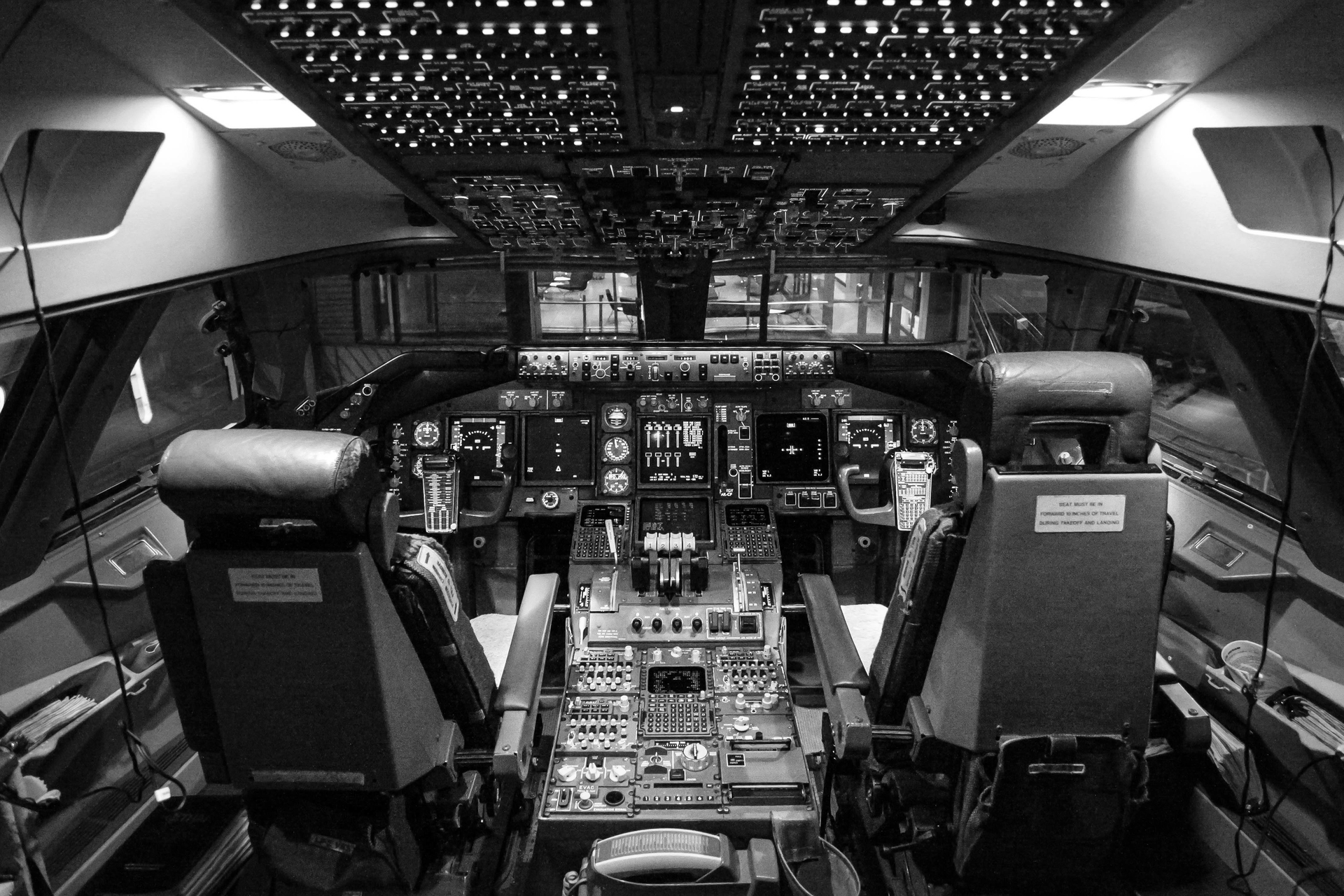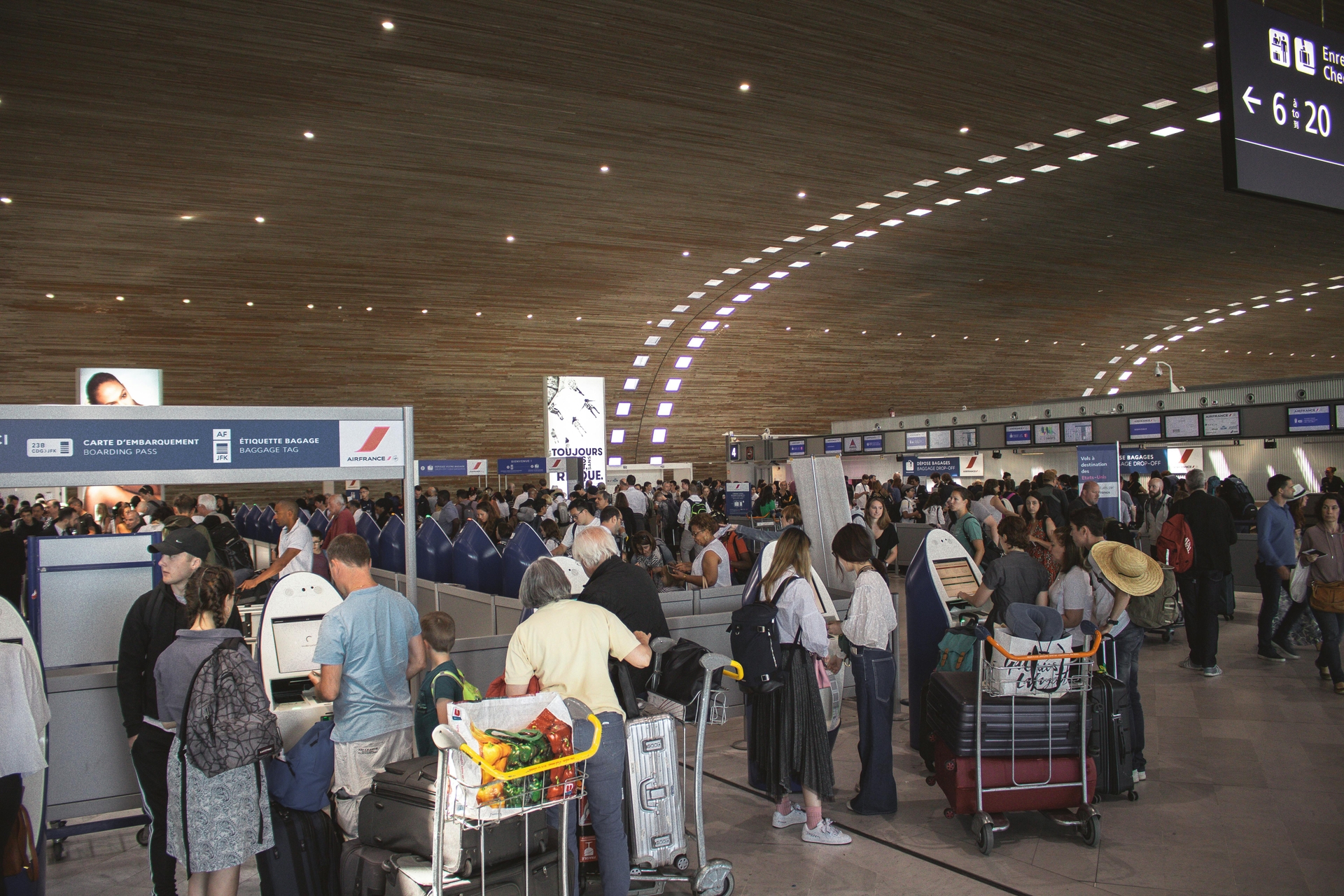
AeroGenie: Su copiloto inteligente.
¿Qué es la aprobación del fabricante de piezas (PMA) y por qué es importante en la aviación?
agosto 25, 2025
Las piezas PMA están transformando la aviación: reducen costos, mejoran el rendimiento y reducen el tiempo de inactividad. Descubra por qué los componentes PMA aprobados por la FAA se están convirtiendo en la opción predilecta para aerolíneas, MRO y fabricantes de equipos originales (OEM).
Necesito una pieza nuevaahora ¿Para que su avión pueda despegar? La Aprobación del Fabricante de Piezas (PMA) es fundamental. La PMA es la forma en que la FAA autoriza a una empresa a fabricar y vender piezas de aeronaves que puedan usarse de forma segura en aeronaves certificadas por la FAA. La certificación significa que las piezas cumplen con los estándares de seguridad y rendimiento y están aprobadas como reemplazos o modificaciones para aeronaves específicas.
A diferencia de las piezas de Fabricante de Equipo Original (OEM), fabricadas por el fabricante original de la aeronave o sus proveedores, las piezas PMA son fabricadas por terceros. Estos fabricantes deben demostrar que sus piezas cumplen o superan los estándares de aeronavegabilidad del fabricante original, tanto en diseño como en calidad de producción.
Este proceso de aprobación combina dos elementos críticos:
- Aprobación del diseño:Demostrar que la pieza propuesta es segura y confiable.
- Aprobación de producción:Demostrar que el fabricante puede producir consistentemente la pieza según los estándares aprobados (Aprobación del fabricante de piezas de la FAA (PMA)).
Un ejecutivo de una compañía de aviación podría comparar esto con la aprobación de la FDA para un medicamento genérico. No es la marca original, pero debe ser igual de segura y eficaz para que se le permita comercializarse.
Por qué es importante la PMA en la aviación
La importancia de la PMA en la aviación va mucho más allá del cumplimiento normativo. Afecta todos los aspectos, desde la seguridad de las aeronaves hasta los costos de mantenimiento de la flota, la resiliencia de la cadena de suministro e incluso la innovación.
En primer lugar, PMA ofrece a los operadores alternativas a las piezas OEM, a menudo a menor costo y con plazos de entrega más rápidos. En una industria donde el tiempo de inactividad puede costar hasta cientos de miles de dólares al día, la disponibilidad de piezas confiables y asequibles es esencial.
En segundo lugar, la PMA ayuda a mitigar las interrupciones en la cadena de suministro. En tiempos de retrasos o obsolescencia de los fabricantes de equipos originales (OEM), las alternativas aprobadas por la FAA permiten que las aeronaves sigan volando. Los proveedores de PMA suelen aplicar ingeniería inversa a los componentes con materiales mejorados o diseños más modernos, lo que beneficia a los operadores sin comprometer la seguridad.
En tercer lugar, la competencia impulsada por las piezas de PMA contribuye a la innovación y al ahorro de costes en todo el sector de la aviación. Muchos fabricantes de PMA se especializan en mejoras de ingeniería o alternativas más duraderas que los fabricantes de equipos originales (OEM) podrían pasar por alto.
Por ejemplo, McFarlane Aviation, que recientemente adquirió PMA Products, Inc., ofrece más de 35.000 piezas aprobadas por la FAA para aeronaves de marcas como Piper, Beechcraft y Cessna. Estas piezas incluyen desde cojinetes y pernos hasta sellos y tapas de combustible, a menudo a precios más competitivos que los de los fabricantes de equipos originales (OEM).Aviación McFarlane).
El proceso de aprobación de la FAA: supervisión del diseño y la producción
Para obtener una PMA, los fabricantes deben someterse a un riguroso proceso de aprobación de la FAA que incluye evaluaciones tanto de diseño como de producción. El proceso se rige principalmente por el Título 14 del CFR, Parte 21, Subparte K, que describe los requisitos específicos para las Aprobaciones de Fabricantes de Piezas (Aprobación del fabricante de piezas de la FAA (PMA)).
Paso 1: Aprobación de los datos de diseño
Hay algunas formas de obtener la aprobación del diseño:
- Acuerdo de licencia con el OEM:El fabricante tiene acceso formal a los datos de diseño originales.
- Identidad sin licencia:El solicitante demuestra que la pieza es idéntica a una pieza OEM mediante pruebas y análisis independientes.
- Prueba y cálculo:El camino más común, este método requiere demostrar que la pieza funciona tan bien o mejor que la original a través de pruebas, simulaciones y documentación.
Paso 2: Aprobación del sistema de producción
Una vez aprobado el diseño, el fabricante debe demostrar su capacidad para producir la pieza de forma consistente según dichas especificaciones. La FAA inspecciona los procesos de control de calidad, la documentación, las herramientas y la capacitación del personal de la instalación.
Las órdenes 8110.42D y 8120.22A de la FAA brindan detalles adicionales sobre cómo la agencia evalúa tanto las nuevas solicitudes como los cambios a los PMA existentes.Orden 8120.22A de la FAA,Orden 8110.42D de la FAA).
Marco regulatorio: Normas y documentos clave
Diversas regulaciones y órdenes interrelacionadas definen el marco de la PMA y garantizan la seguridad y la calidad en todos los ámbitos. Estos documentos sirven de guía para fabricantes, ingenieros, inspectores y equipos legales que gestionan los procesos de la PMA.
Regulaciones clave:
- 14 CFR Parte 21, Subparte K:Define cómo solicitar y obtener la certificación PMA.
- 14 CFR Parte 43:Gobierna el mantenimiento, el mantenimiento preventivo, la reconstrucción y las modificaciones; es importante al reemplazar piezas OEM con piezas PMA.
- 14 CFR Parte 45, Subparte B:Aborda el marcado e identificación de piezas para garantizar la trazabilidad y autenticidad.
Orientación de apoyo:
- Circular Consultiva 21-43:Aclara cómo se pueden producir piezas PMA según las Subpartes F, G, K y O.
- Orden 8110.42D:Establece los procedimientos internos paso a paso de la FAA para evaluar y aprobar a los solicitantes de PMA (Orden 8110.42D de la FAA).
- Orden 8120.22A:Se centra en las evaluaciones del sistema de producción y la vigilancia continua de las operaciones de fabricación (Orden 8120.22A de la FAA).
Puede que los ejecutivos de aviación no necesiten memorizar todas las secciones del CFR, pero es importante saber que la aprobación de la PMA de la FAA no se otorga a la ligera. Se trata de un proceso regulado y altamente estructurado, diseñado para garantizar que las piezas de repuesto sean tan seguras y fiables como las originales.
Eficiencia de costos y estabilidad de la cadena de suministro
Uno de los principales impulsores de la adopción de la Aprobación del Fabricante de Piezas (PMA) es el ahorro de costos. Las piezas PMA aprobadas por la FAA pueden ser significativamente más económicas que las piezas del Fabricante de Equipo Original (OEM), a veces hasta entre un 30 % y un 50 %. Esto resulta especialmente atractivo para las aerolíneas y...MRO(Proveedores de mantenimiento, reparación y revisión) que operan con márgenes estrechos.
Además de reducir los costos unitarios, las piezas de PMA también reducen el riesgo en la cadena de suministro. Las aerolíneas no se limitan a los calendarios de suministro ni a las estrategias de precios de los fabricantes de equipos originales (OEM), que pueden ser rígidos o monopolísticos. Los fabricantes de PMA suelen ofrecer plazos de entrega más rápidos, mejor disponibilidad de inventario y mayor transparencia en los precios.
Como lo resume Scott Still, director ejecutivo de McFarlane Aviation, PMA Products tiene una "larga reputación de proporcionar piezas de repuesto FAA-PMA de alta calidad", incluidos pernos, cojinetes, bujes, tapas, juntas y más, componentes que se reemplazan con frecuencia y a menudo están sujetos a presión de suministro (Aviación McFarlane).
Esta flexibilidad mejora tanto la resiliencia operativa como la previsibilidad financiera.en todo el ecosistema de la aviación.
Mitos y conceptos erróneos sobre las piezas de PMA
A pesar de la adopción generalizada de piezas PMA (Aprobación del fabricante de piezas), persisten conceptos erróneos, especialmente entre los operadores tradicionales o las partes interesadas internacionales.
Mito 1: Las piezas PMA son inferiores a las piezas OEM
Este es quizás el mito más extendido. En realidad, las piezas con PMA deben cumplir o superar los estándares de aeronavegabilidad de la FAA para ser aprobadas. La FAA evalúa rigurosamente los controles de diseño, pruebas y producción de cada pieza antes de otorgar la PMA. Los titulares de la PMA también están sujetos a la supervisión y auditorías de la FAA para garantizar el cumplimiento.Orden 8120.22A de la FAA).
Mito 2: El uso de piezas de PMA anula las garantías de las aeronaves
Esta preocupación a menudo proviene de los propios fabricantes de equipos originales (OEM), pero los tribunales han confirmado reiteradamente que el uso de piezas PMA aprobadas por la FAA no invalida la aeronavegabilidad ni viola las garantías, especialmente en Estados Unidos, donde las leyes antimonopolio y de competencia protegen el derecho a utilizar proveedores alternativos.
Mito 3: Las piezas de PMA son solo para aeronaves antiguas
Si bien las aeronaves más antiguas se benefician de la disponibilidad de PMA, muchas plataformas más nuevas también incorporan piezas de PMA, especialmente las flotas comerciales de alto uso. De hecho, se prevé que el mercado de PMA crezca de 247,8 millones de dólares en 2024 a 389,03 millones de dólares en 2032, impulsado por la creciente demanda en los sectores comercial y regional.Investigación de Credence).
¿Cuándo es una opción inteligente elegir una pieza de PMA?
La decisión de utilizar una pieza con Aprobación del Fabricante de Piezas (PMA) suele depender de la misión del operador, su presupuesto, el entorno regulatorio y su tolerancia al riesgo (o riesgo percibido). Para las aerolíneas comerciales y los operadores de grandes flotas, las ventajas financieras son evidentes: menores costos de adquisición, plazos de entrega más predecibles y menor dependencia de los monopolios de fabricantes de equipos originales (OEM).
El tamaño de la flota también influye. Los operadores con un alto número de ciclos (como jets regionales o aviones de carga) se benefician del uso de piezas PMA en sistemas de alto desgaste como trenes de aterrizaje, tapas de combustible, sellos y hardware del motor. Estos son precisamente los tipos de componentes producidos por fabricantes con certificación PMA, como PMA Products y McFarlane Aviation.Aviación McFarlane).
También cabe destacar que ciertas piezas PMA, especialmente las instaladas bajo el principio de identidad (donde son sustancialmente idénticas a una pieza OEM), requieren menos justificación de ingeniería y, por lo tanto, plazos de aprobación PMA de la FAA más rápidos. Estas son opciones fáciles para los operadores que buscan una transición rentable.
Cómo encaja la PMA en el marco de aprobación más amplio de la FAA
La Aprobación del Fabricante de Piezas (PMA) forma parte del marco general de la FAA para la regulación del diseño y la producción. Se enmarca en el Título 14 del CFR, Parte 21, Subparte K, que describe los procedimientos para la certificación de piezas y artículos.Aprobación del fabricante de piezas de la FAA (PMA)).
Otras certificaciones PMA relevantes de la FAA incluyen:
- Certificado de tipo (TC):Cubre el diseño original de un avión o motor completo.
- Certificado de tipo suplementario (STC):Cubre modificaciones a un producto previamente certificado.
- Orden Técnica Estándar (TSO):Se utiliza para artículos que cumplen estándares específicos de la FAA.
Cada vía tiene un propósito diferente. La PMA se aplica específicamente a las piezas de posventa que pueden producirse independientemente del fabricante original (OEM), a menudo bajo sistemas de garantía de calidad equivalentes o superiores. La FAA evalúa los datos de diseño, los sistemas de calidad y, en ocasiones, los resultados de las pruebas del solicitante para garantizar la aeronavegabilidad.Orden 8110.42D de la FAA).
En este marco, PMA actúa como puente entre la innovación y la confianza regulatoria, permitiendo una competencia sana sin comprometer la seguridad.
Cómo el proceso PMA impulsa la innovación
Uno de los aspectos menos valorados de la Aprobación del Fabricante de Piezas (PMA) es su papel en el fomento de la innovación. Mientras que los fabricantes de equipos originales (OEM) suelen centrarse en plataformas completas y sistemas principales, los proveedores de PMA se centran en microproblemas que afectan a los operadores a diario, como el desgaste prematuro de las piezas, la complejidad innecesaria o los costes de sustitución excesivos.
Mediante la ingeniería inversa de piezas antiguas y la recopilación de datos de rendimiento reales, los fabricantes de PMA pueden ofrecer rediseños más inteligentes. Por ejemplo, un rodamiento o sello que se desgasta cada 300 ciclos en una configuración OEM podría rediseñarse utilizando mejores materiales o geometrías que extienden su vida útil a 500 ciclos. Estas mejoras incrementales se traducen en ahorros significativos en el ciclo de vida.
Algunos proveedores van más allá e integran tecnologías de producción avanzadas como fabricación aditiva o inspección en tiempo real en sus flujos de trabajo, lo que ayuda a reducir los costos y mejorar la calidad sin sacrificar el cumplimiento de la FAA.Escuela Sloan de Administración del MIT). La FAA apoya esto a través de su estructura de asesoramiento y supervisión, fomentando mejoras de calidad dentro de los sistemas de producción aprobados por la PMA (Circular asesora AC 21-43 de la FAA).
Estudio de caso: Adquisición de PMA Products por parte de McFarlane Aviation
Un claro ejemplo de la creciente influencia de PMA (Aprobación del Fabricante de Piezas) en la industria es la adquisición por parte de McFarlane Aviation de PMA Products, Inc., una empresa colaboradora de larga data y una marca respetada en la aviación general. Durante más de 20 años, ambas compañías han colaborado en la fabricación de componentes aprobados por la FAA para aeronaves como Cessna, Piper y Beechcraft, así como piezas para motores de turbina PT6.Aviación McFarlane).
La adquisición reúne más de 35.000 piezas bajo el paraguas de McFarlane, incluyendo pernos del tren de aterrizaje, cojinetes, bujes, bisagras de control de vuelo, juntas del sistema de combustible y componentes del motor, todos aprobados por la FAA-PMA. Estos componentes tienen una alta tasa de fallos y ciclos de funcionamiento, y son cruciales para un vuelo seguro.
Esta medida también se alinea con la misión de McFarlane de brindar soluciones rentables y duraderas al mercado de la aviación general, un sector especialmente afectado por la escasez de piezas de fabricantes de equipos originales (OEM) y los problemas en la cadena de suministro. Este caso destaca cómo PMA está impulsando un crecimiento estratégico, impulsado por ingenieros, y la mejora de productos.
Supervisión de la FAA: la columna vertebral regulatoria detrás de la PMA
Los fabricantes que solicitan PMA (aprobación del fabricante de piezas) deben demostrar dos cosas: que su pieza está en condiciones de volar y que su sistema de producción puede mantener de forma constante dicha aeronavegabilidad.
Este proceso se describe en la Orden 8110.42D de la FAA, que define los Procedimientos de Aprobación de Fabricantes de Piezas. La orden describe múltiples vías para la aprobación, incluyendo pruebas y cálculos, verificación de identidad y acuerdos de licencia. Dependiendo de la vía, los fabricantes podrían tener que proporcionar análisis de tensión, datos de fatiga, pruebas de materiales o comprobación de tolerancias dimensionales en comparación con las especificaciones del fabricante original (OEM).Orden 8110.42D de la FAA).
Una vez aprobados, los fabricantes deben cumplir con auditorías continuas del sistema de calidad y están sujetos a inspecciones periódicas de la FAA para verificar el cumplimiento continuo. Estas normas se refuerzan aún más con la Orden 8120.22A de la FAA, que regula cómo los titulares de aprobaciones de producción (PAH) deben operar, documentar y mejorar sus procesos de fabricación.Orden 8120.22A de la FAA).
Por qué PMA es importante para las aerolíneas, los MRO y el futuro verde de la aviación
Para aerolíneas yMRO (proveedores de mantenimiento, reparación y revisión)Las piezas PMA (aprobación del fabricante de piezas) son esenciales para la disponibilidad y la rentabilidad de las piezas.
Además de ofrecer una calidad comparable o superior y mantener precios más competitivos, PMA prolonga la vida útil de las aeronaves con piezas certificadas, lo que reduce la necesidad de revisiones completas o el retiro anticipado. Esta es una contribución sutil pero significativa a los principios de la economía circular de la aviación.
Las piezas de PMA también contribuyen directamente a los objetivos de sostenibilidad. Ofrecen componentes más duraderos y, a menudo, más fáciles de reparar, lo que minimiza los residuos, conserva las materias primas y reduce la huella de carbono derivada de la fabricación de nuevas piezas. Esto también implica menos interrupciones y operaciones más eficientes, contribuyendo a una industria de la aviación más limpia y sostenible.Investigación de Credence,AeroKool Aviación).
PMA es el futuro de una aviación más inteligente
Los proveedores de aprobación de fabricantes de piezas (PMA) pueden ser parte de una red de proveedores secundarios, pero son fundamentales para el cambiante panorama de la fabricación de aeronaves y del MRO.
Ofrece un marco probado para la seguridad, la calidad y la innovación, regulado a través de una rigurosa supervisión de la FAA y en el que confían aerolíneas, fabricantes de equipos originales (OEM) y MRO por igual.
Desde la reducción de costos y la diversificación de las cadenas de suministro hasta la entrega de un rendimiento igual o incluso superior, PMA se ha ganado un lugar en el ecosistema de la aviación. Y con proyecciones de crecimiento del mercado que estiman un aumento de $142 millones en los próximos siete años, su papel fundamental se consolida.Investigación Credence).
¿Quiere reducir costos, fortalecer su cadena de suministro y preparar su flota para el futuro?Descubra cómo las piezas PMA aprobadas por la FAA pueden transformar su estrategia de adquisiciones sin comprometer la seguridad ni el rendimiento.Habla con los expertosen ePlaneAI hoy para comenzar →
Tendencias de mantenimiento de aviación que podrían cobrar impulso en circunstancias inciertas
Las aeronaves permanecen en servicio durante más tiempo, las cadenas de suministro son un polvorín y la tecnología evoluciona de la noche a la mañana. Descubra las tendencias de mantenimiento que cobran impulso y lo que significan para los operadores que buscan mantenerse en el aire y ser rentables.

October 2, 2025
Cómo elegir las piezas de aeronave adecuadas con análisis de tolerancia a daños
El futuro de la seguridad aérea gira en torno a las piezas. Las piezas auténticas y trazables ofrecen a las flotas una tolerancia a los daños y un rendimiento óptimos para maximizar la seguridad y la eficiencia en las adquisiciones.

September 30, 2025
Cómo entrar en nuevos mercados de aviación: La guía completa para proveedores de piezas
¿Desea entrar en nuevos mercados de aviación? Descubra cómo los proveedores pueden analizar la demanda, gestionar las piezas de PMA y generar confianza en las aerolíneas. Una guía completa para el crecimiento global.

September 25, 2025
5 estrategias de marketing de aviación que deberías usar para vender a aerolíneas globales
Las aerolíneas se enfrentan a márgenes cada vez más bajos y expectativas cada vez mayores. Descubra cómo las mejores estrategias (ofertas dinámicas, colaboraciones, personalización y más) pueden cerrar acuerdos con aerolíneas globales.
